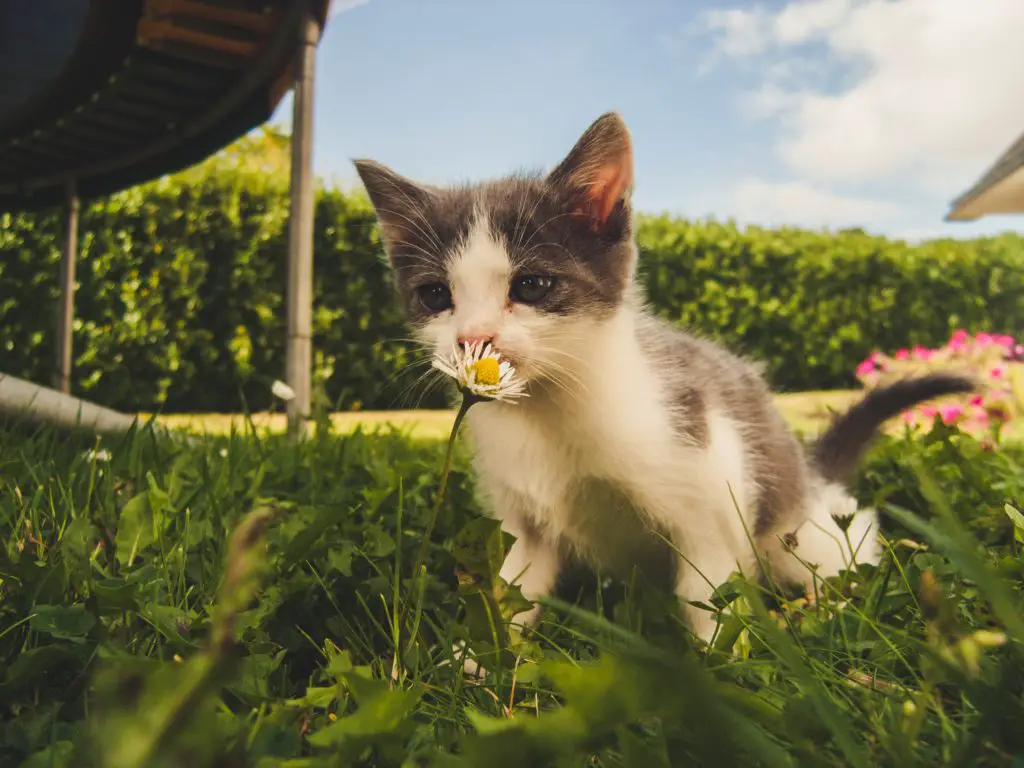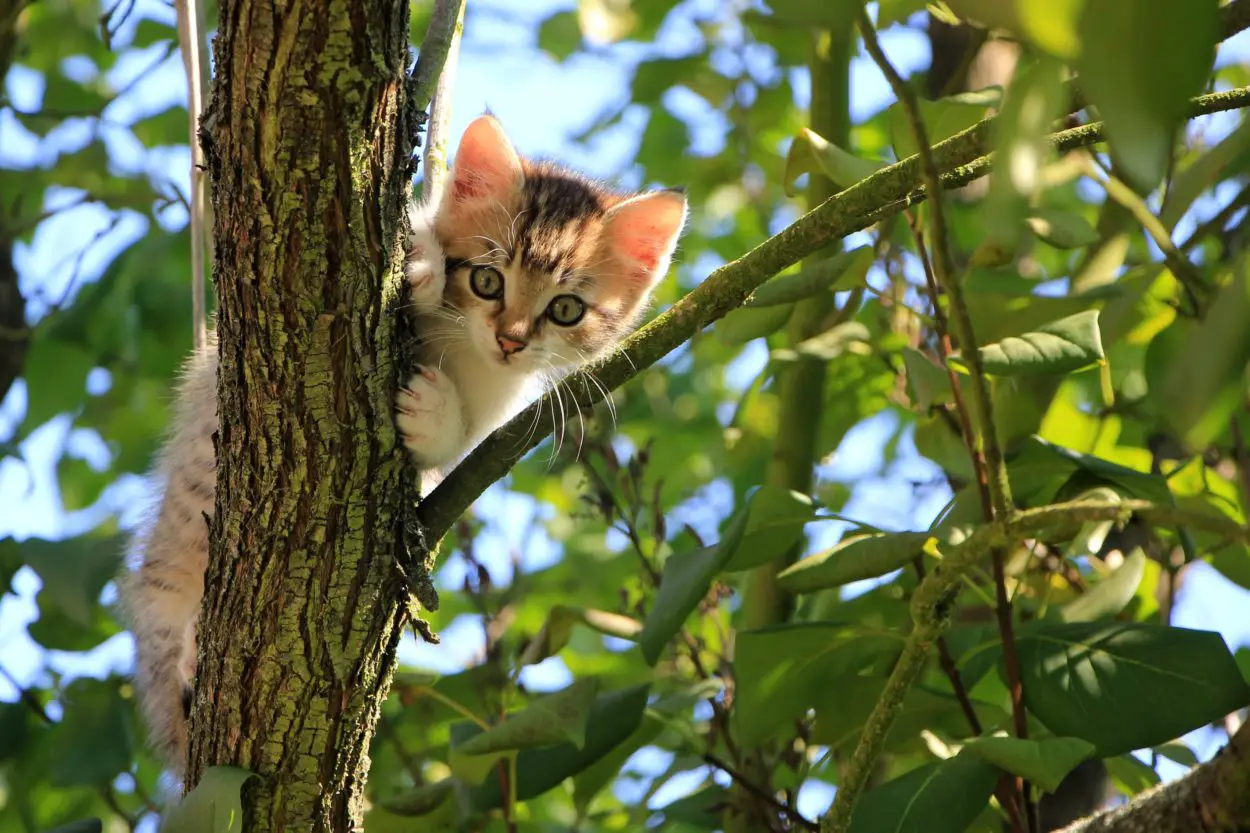Losing your cat can be a nightmare for every pet owner. Your cat is a member of your family and the idea that your cat is missing can not only be very stressful and upsetting, but you also worry that your cat may be scared or hurt.
So what should you do if your cat goes missing?
How do you find a cat that has been lost, where should you look for your missing cat, and what actions can you do to prevent your cat from getting lost again?
How Long Does It Take For A Cat To Come Back Home?
Have you ever had a cat that ran away and never came back?
The chances that a cat never comes back are unlikely, because cats, like all living beings, need food and shelter, but they also have a deep shared bond with you. Unless your cat underwent some difficult emotional or other trauma, or is suffering a physical condition, it is very likely that your cat will come back home.
In fact, most cats that go missing return home or are found within 24 hours. Furthermore, statistics indicate that most lost pets are found within 30 days.
Unfortunately, when people notice a stray cat they will often try to help it, but lost cats are inclined to be furtive and they are harder to spot, and people tend to ignore them because free-roaming cats are not unusual for who cats are. A lot of cat owners tend to disregard the dangers to free-roaming cats and let their cats outside without a collar.
In 2012., the American Society for the Prevention of Cruelty to Animals published the first national study on lost pets, in the June 2012 issue of the journal Animals. The results were astounding:
- Only 15 percent of pet guardians reported a lost dog or cat in the past five years.
- Percentages of lost dogs versus lost cats were nearly identical: 14 percent for dogs and 15 percent for cats.
- 93 percent of dogs and 75 percent of cats reported lost were returned safely to their homes.
- Only 6 percent of dog owners and 2 percent of cat owners found their lost pets at shelters.

Consider The Way Your Cat Behaves
It’s important to analyze your cat’s behavior to understand her actions. Consider your cat’s behavior on a personal level, and her behavioral patterns in the last couple of weeks.
Make sure to answer the following questions:
- Is your cat an explorer? Cats are curious beings and such as they like to explore new places.
- How much time does your cat spend in your home and outside? Remember that the way cats perceive the idea of time is very different than we perceive it.
- How old is your cat? Cats that are very close to dying will retreat in places where no one will find them as they will feel vulnerable. Oppositely, young cats may be too young to have already gained strong attachments to you.
- How much time does your cat spend with you? Is your cat attached to you on a personal level, as someone who gives her food, comfort, and safety? Can she rely on you to always be with her, or help her in times of need?
- How often do you see your cat? If your cat thinks of you as a stranger or just a person that’s feeding her food, she is less likely to stay with you. Cats, like all beings, need to be loved and taken care of on a deeper level.
- Has your cat suffered any physical or emotional trauma in the last couple of days/weeks? One of the main reasons a cat would suddenly run away is if she has recently suffered an emotional or physical trauma. If your cat has contracted a disease, she might feel vulnerable which makes it more likely for her to go hiding.
- Has your cat been acting differently than before? Did you notice a change in your cat’s behavior before she went missing? Similarly, think about your actions as well – did you treat the cat in the same way you did before?

Do Cats Remember Where They Live?
Although cats do not process information in the same way as humans, they have exceptional memory capacities, and their memories, like those of other animals, are tied to their senses. If you have a distinctive combination of smell and sound or give your cat specialized food at the same time every day, your cat isn’t likely to forget it anytime soon.
Cats and other animals use associative memory to store away information that helps them to survive. Cats even dream about their experiences! Unsurprisingly, this means cats remember the places where they get food and shelter. Associative memories regulate a cat’s ongoing behavior.
Most recently, a cat experiment has shown that cats process information and remember in ways similar to humans and dogs. Researches were able to report that cats are able to access memories of events and at least some of the details surrounding them.
“It might be possible that cats are able to recall memories on demand, perhaps as a form of amusement, similar to how we humans daydream.”
Bob Yirka, Phys.org

14 Tips To Get Your Cat To Come Back Home
- Contact your neighbors and talk with the people in your local community. Perhaps they have taken in your cat, thinking she’s lost.
- Put up posters in the neighborhood, with a photo of your cat, and a description. Describe your cat – her age, the way she acts, if she wears a collar, if she’s microchipped, and so on. Put those posters on lamp posts, in shop windows, or wherever it is permitted in your local area.
- Offer a reward for the safe return of your cat. Most people would be happy to reunite a lost cat with its human family without money. But some people might go the extra length in case they get a reward.
- Walk around your neighborhood, searching for and calling the cat. It is extremely likely that your cat is still in the vicinity although she wandered further off. Waste no time!
- Contact your local veterinarian. Veterinarians are the first ones that are notified when a lost animal is brought in, and it is very important to call and check with them to see whether or not they have your cat.
- Notify other veterinarians in your community. If someone found an injured cat, they may have taken it to the nearest veterinarian for treatment. If your cat
- Notify your local police officers. Police officers that patrol around the neighborhood will have a greater opportunity of spotting your cat.
- Use social media. Post your cat’s picture and description on various social networks and ask your friends to keep an eye out. On most social media platforms such as Facebook, there are groups or lists for lost/found animals in specific regions.
- Check your newspaper for the lost and found ads daily. Someone may have found your cat but doesn’t have a way to contact you.
- Talk with all regional regional/national ‘lost pet’ organizations. There are many charities and websites that help reunite pets with their owners. They’ll need a good photo, and if available, the microchip number.
- Stand outside your home, calling your cat with its name. Use a friendly voice. This is best done by the family member with whom the cat had the closest bond. Cats can hear over vast distances, and they are very good at recognizing voices due to their heightened sense. If your cat lost its way home, hearing your voice will bring it back.
- Rattle a bag of cat food or cat treats close to your home and leave them there. Make the sounds the cat associates with getting fed, and this may persuade the cat to come back home, as the prospect of instant food is a great persuader. The cats who left home on an adventure and find the free life tougher than expected will want to come back.
- Put your dirty clothes by the door. Similarly, cats are very sensitive to smells and odors, and if there are particular smells your cat recognizes, it can help her track its way back home.
- Leave your cat’s favorite toy in the garden. Your cat may have left home thinking you’ve left her, if you’re not spending a lot of time with her at home. Leaving food in the garden, or her favorite toys, will attract her to be there.
Additional Actions You Can Take Now
To understand where your cat might be located, it is important to think about who she is and what she likes on a personal level. Think about the things your cat likes, people or little things that get her curiosity, her sleeping and eating patterns, and everything else you can think of!
Answer the following questions:
- When was the last time you saw your cat?
- When was the last time your cat ate something? At what times is she usually used to eating food?
- At what times does your cat usually sleep and stay active? Searching for your cat at times when she is awake, especially if she’s somewhere close, may help in finding her faster.
- What kind of places does your cat like – small and cozy corners behind the cupboard, or open and large rooms? Think about the temperature of those places. Does your cat prefer spending time sunbathing, or sleeping in the shade?
- Is your cat used to other people feeding her?
- How does your cat react to other cats in the neighborhood?

What Can You Do When Your Cat Comes Home After Being Missing?
After you have finally found your cat, it is equally important to prevent your cat from going missing ever again, as it is to think about why your cat went missing in the first place.
Make sure to take proper care of your cat and her know that she is in a safe place. Give your cat space and time to recover from this experience, to heal and reconnect with her home. Play with your cat. Spend time with your cat and let her know she is loved and this is where she can be, with you.
Will My Cat Run Away If I Let Her Outside?
Some people make the mistake of blocking access to outdoors for a limited amount of time in order to make sure the cat doesn’t run away again. Doing this can only reinforce the negative experience/trauma your cat may have suffered.
It is important for the cat to regain positive connections with the environment around her and her own self-independency. Nature is important for cats. Remember that cats are very capable beings and they know how to take care of themselves.
The Things You Can Do To Prevent Your Cat From Getting Lost Again:
There are many simple things you can do to prevent your cat from getting lost again, from making sure you cat has a collar with your contact information on it, getting a Bluetooth, or a GPS tracker which can be of great help in locating your pets, all the way to microchipping your cat with the local veterinarian.
Continue reading to learn more about the actions you can take to prevent your cat from getting lost again.
Get Your Cat A GPS Tracker
A GPS tracker is a navigational tracking device that can be put on your cat’s collar to find out her whereabouts. The are usually very bulky and cost a lot, but they offer unlimited range and real time tracking which may be extremely helpful in locating your cat. GPS trackers do not work in door because they need a line-of-sight connection with the satellites.
Advantages Of A GPS Tracker
- Long battery life of 2-6 days
- Real time localization
- Global coverage
- Precise localization using advanced GPS technology
- Unlimited range
- Waterproof (in most cases)
Disadvantages Of A GPS Tracker
- Continual exposure to radiofrequency radiation to your cat
- Heavy size of the device itself makes it difficult to carry around all the time
- Low costs associated with the usage of the GPS tracker
- Cost of the device itself
- Constant need to recharge the batteries
- GPS interference from other devices may interrupt the GPS signals

Get Your Cat A Digital Bluetooth Tracker
A Bluetooth tracker is a small device that can easily be attached to your cat’s collar to keep track of her whereabouts.
The newest Bluetooth trackers use Bluetooth Low Energy (also known as BLE or Bluetooth 4.0) to wirelessly connect to your smartphone and transmit data to that device through the connection.
Here at Meowfluent, we would highly suggest using Bluetooth trackers instead of GPS trackers, unless you live in remote areas outside of town, without any or low access to internet.
Advantages Of A Bluetooth Tracker
- Lower starting costs
- Doesn’t require battery recharging
- Emits a low, harmless signal
- Is synched to your smartphone
Disadvantages Of A Bluetooth Tracker
- Requires Bluetooth
- Has a limited signal reach of about 10-20 meters
- Drains the battery of your smartphone
- Does not track live
Add An ID Tag To Your Cat’s Collar
A collar with an identification tag is one of the simplest and most economical way to make sure your cat finds a way back to you in case she get lost.
Collars are especially useful for finding a missing cat, but they can also be useful in other ways – for example, if your cat spends a lot of time outdoor, a collar it will help everyone know that your cat already has an owner.
If you live in the UK, there is no legal obligation to include an ID tag to your cat’s collar, but there is for a dog. We recommend you use an ID tag for your cat regardless.
Make sure to put your cat’s name and your contact information number on the tag.
Pro tip: If your cat or cats are indoor only, put “I am lost” on their tags so that someone will actually call you instead of thinking the cat is simply out in the prowl.
Get Your Cat Microchipped
A microchip for cats is an electronic chip the size of a grain of rice implanted underneath the skin of your cat. It is considered very safe, and unlike a GPS device it does not require power.
A microchip is activated by an animal shelter or a veterinarian with a RFID scanner used across the cat’s body where the microchip is embedded. The scanner will activate an identification number, which then links to a database with your ownership information.
In case your cat goes missing, it will be very easy to scan the microchip to locate the cat and contact you as the owner of the lost cat.
Take Photos Of Your Cat
Take a clear, 5×7 or larger photo of your cat and print it off numerous times. This will help get your pet home to you if she gets lost again and speed up the process of searching for your pet. Also, you won’t have to worry about printing posters again and the dilemma of choosing the right photo, because you will already be ready. And if it’s not of use to you, it will always be a great memory.
Keep Proof Of Ownership
Even though we know pets are members of our family, animal laws view them as personal property. Because of this, it is important to have a legal proof of ownership of your cat. Proof of ownership can be obtained in numerous ways: from the veterinary records, adoption or purchase records from local shelters, AKC registration records or in some cases the local authorities.
If the ownership of your pet is legally shared by two or more people, have a written document that states who the owner or owners are.
Pro tip: microchipping your cat does not prove ownership of your cat so make sure you have a proof of ownership as well.

Going Through The Experience Of Losing A Cat
We know that losing your cat can be a traumatic experience itself. You’ve given everything to your cat – food, comfort, safety, and love, but suddenly you feel in complete anguish, for a great part of yourself is missing and you don’t know what to do.
Do not feel lost if you’ve lost your pets, for that is no way to help them.
Remember that no matter how much you love your cat, it is also important to love and forgive yourself. Don’t panic, for that will only make the situation more difficult not only for you, but everyone else as well.
Cats are very curious, intelligent, and awesome beings! They know how to take care of themselves. And they are also very forgiving.
No matter what happens, instead of feeling trapped in an emotional dilemma, reflect on this experience, see what you’ve learned from it, and make sure to take the steps necessary so that it never happens again.



My cat escaped
From bedroom window
6 weeks ago He has finally been spotted
But he is frightened and only comes out at 1, 2, 3 am
Will not go to food placed in trap
We will spot him on game cameras then he disappears for 3-4 days before we spot him again
Oh and he’s spotted in our neighbors yard
2 doors down
What do you recommend
There are a few feral cats in our neighborehood as well as raccoons
Hi Rachel,
I’m sorry to hear about your cat. It must be quite worrying for you. It’s good to know he’s been spotted, even though he’s feeling scared. Since he’s been seen in the neighbor’s yard a couple of doors down, here are a few simple steps you might consider:
Firstly, try to create a calm and inviting atmosphere around the area where he’s been spotted. You could place some familiar items nearby, like his bedding or toys, to make him feel more comfortable.
Additionally, consider spending time in the area during the times he’s been seen. Your presence might help reassure him and encourage him to come out.
If you can, engage with your neighbors and let them know about the situation. They might also keep an eye out for him and inform you if they see him.
As you’ve been doing, continue using the game cameras to monitor his movements. This can provide valuable insights into his behavior and whereabouts.
Lastly, remember that cats can sometimes be influenced by other animals, like feral cats and raccoons, in the neighborhood. Keep an eye out for these potential interactions.
I truly hope your cat returns home safely soon. Wishing you the best of luck in reuniting with him.